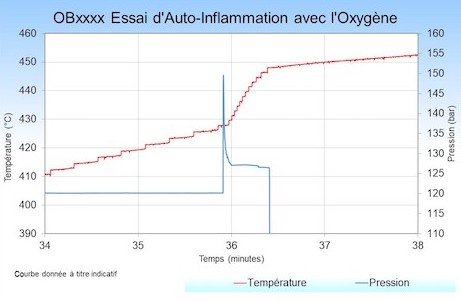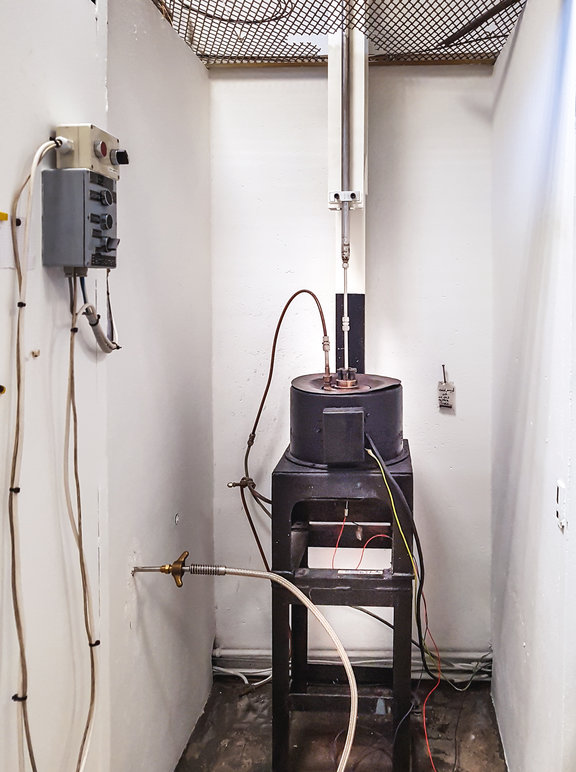Auto-ignition temperature
Objectives
To classify the sensitivity of samples, to measure the risks of auto-ignition of a liquid or solid material and to guarantee the safety of users.
What does the minimum auto-ignition temperature test involve?
This test makes it possible to determine the temperature at which a material ignites spontaneously, in a uniformly heated oxygen pressure chamber.
This test is carried out on non-metallic materials, according to the standards:
- EN 1797
- NF EN ISO 11114-3
- ISO 21010
Test procedure
- Our technicians take a small amount (at least 0.06 g) of the sample to be tested: this sample can be liquid or solid.
- The sample is placed in a Pyrex sample holder and then in a reaction chamber.
- The reaction chamber is sealed and purged with oxygen. Why ? To remove air and any residues from previous combustions.
- The reaction chamber is pressurised to 120 bar.
- The reaction chamber is heated to a maximum of 500°C.
- Temperature and pressure are recorded to determine the auto-ignition temperature of the test sample.
Our failure analysis activities
Oxygen failures, mechanical failures, lifetime of methane steam reformer tubes, etc.
Contact CTE
AIR LIQUIDE Global E&C Solutions France - CTE
Campus Innovation Paris 1
Chemin de la Porte des Loges
78350 LES LOGES EN JOSAS
01 39 07 62 62

